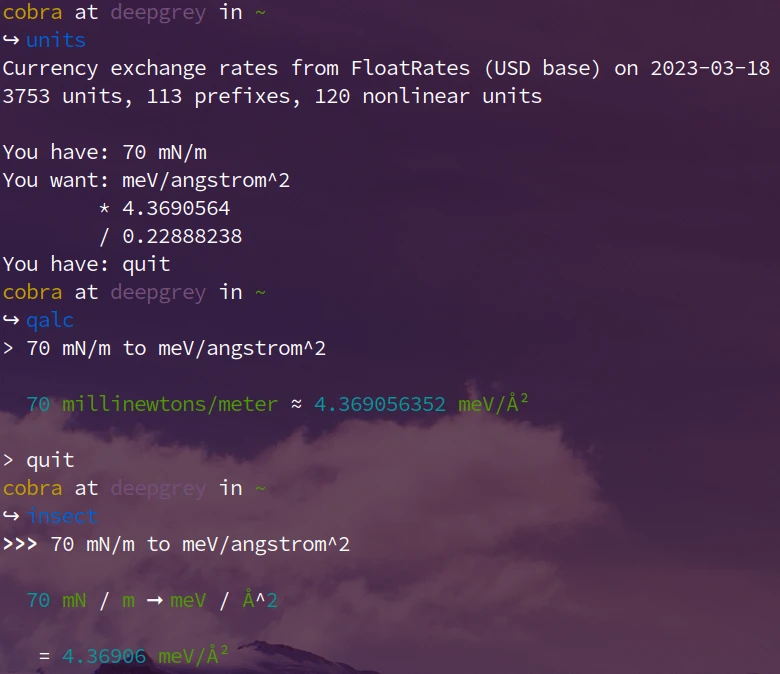Units
As a physicist, it is very useful to be able to perform calculations quickly, whether it is by pure mental arithmetic or on the back of an envelope. I'm immensely grateful for the training I've received in school that allows me to perform such calculations with relative ease. When I see my students struggling with even the most trivial of these calculations and having to rely on their smartphones to get a result, I get the impression that the education system is dismissing these skills as obsolete in our digital age. A big mistake, if you ask me.
Don't get me wrong: when I need accurate results, I also resort to calculators or calculator apps on Android or Arch. And as an added benefit, some of them handle not only numbers, but also the units. This is really helpful, because converting numerical results from all sorts of obscure units to SI is often necessary when consulting older references, and it's as tedious as it is frustrating - just look at the Wikipedia page of the cgs system.
Apart from Mathematica, I know of three command-line programs (one of which, namely, qalc, is also available with a graphical user interface) for doing calculations with units: the veteran units, the modern qalc, and the new and hip insect. Here's an example of these three tools dealing with the conversion of the surface tension (in N/m) of water to surface energy (in eV/Ų), which for a liquid is one and the same despite the different units.
